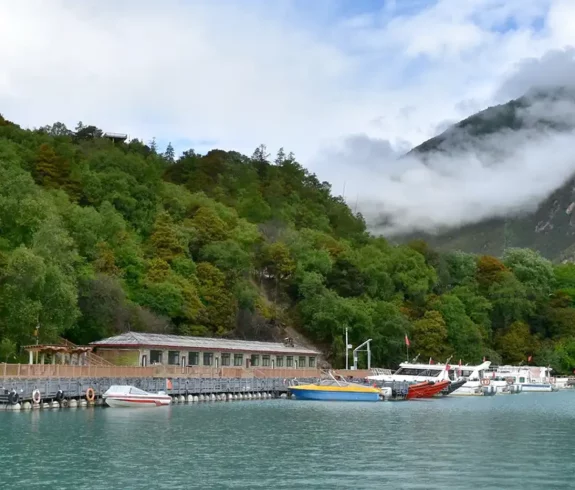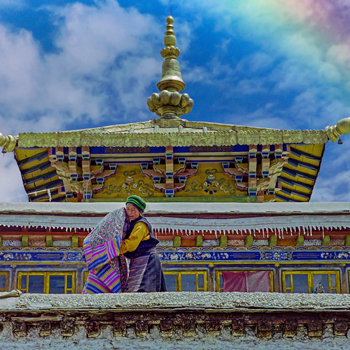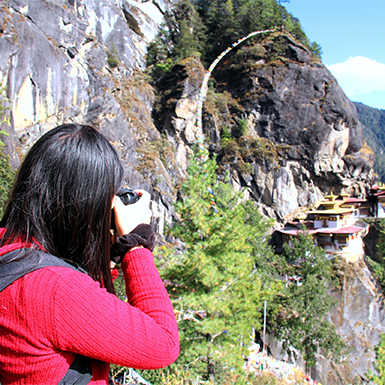Draksum-tso Lake is a breathtaking sight that any traveler shouldn’t overlook. This magnificent Lake should be on everyone’s bucket list in China’s Tibet Autonomous Region. It is the largest Lake in the region and is revered by Tibetan Buddhists as a sacred body of water. With its glistening blue waters surrounded by majestic white snow-capped mountains, Draksum-tso Lake provides a truly awe-inspiring view.
The Draksum-tso Lake’s location at the base of the Himalayas makes it an ideal spot for outdoor activities and exploration and for simply marveling at the Lake’s beauty. Moreover, its unique history, culture, and wildlife make the lake experience even more captivating. In this blog post, we will explore all the beautiful aspects of Draksum-tso Lake and why it is an unforgettable destination for all.
Location and Features of the Lake
Nestled in Gongbogyamda County, Draksum-tso is a scenic alpine lake at 3,538 meters – a whopping 90 km away from the county seat of Gorlingka and 120 km away from Bayi Town. Recognized by the World Tourism Organization in 1997, this picturesque spot was granted a 4A title by the State Tourism Administration in 2001, and by 2002 it was designated a State Forest Park. With a length of 18 km and an average breadth of 1.5 km, its deepest point plunges a staggering 60 meters below sea level, making it a sight worthy of recognition.
Legend
The Draksum Tso is said to have been beloved by Geser, the semi-mythical king of Tibet and the subject of many legends and epics. It is said that Geser visited the nearby monasteries and that remnants of his presence can still be found along the way to and at the Lake’s shore. Legends hold that King Geser imprinted his body on the Lake’s edge. It is also said that even Guru Rinpoche, commonly called Padmasambhava, traveled to this Lake and left his mark on the stones and caves.
The attraction of the Lake
The majestic Draksum-tso is dotted with a small island resembling a sheep’s back, etched with scratches left by glacial movement. Its origin, glacier-fed rivers, provides an abundance of ice which often extends deep into the lush primitive forests, creating a beautiful reflection on the Lake. Surrounded by snow-capped mountains clothed in dense forestry, the Lake is a haven for rare wildlife such as bears, leopards, bharal, musk deer, and Tibetan snow pheasants. When summer and autumn come around, the area blooms with many flowers, swarming with bright butterflies and hardworking bees.
Serenity permeates the air around Draksum-tso, its blue waters a canvas of ever-changing hues reflecting the slopes of the surrounding area. It’s a tranquil haven of respite from the hustle and bustle of everyday life. Its beauty often rivals that of lakes like Namtso, Yamdrok tso, Manasarovar, Siling Tso, and Tangra Yum Tso. Draksum-tso has made quite a name for itself, and it’s easy to see why: the lakeside resort is complete with cozy cottages, a yacht, hotels, and restaurants.
Attraction around the Draksum-tso Lake
Tso Zonggongba Monastery
Sprawling across a lake, a tiny island beckons visitors with a bridge to its southern shore. At Tso Zonggongba Monastery, a celebrated Nyingma Buddhist lama, Sangye Lingpa, was born into a world of pilgrimage and worship. Although its name translates to “fort on the lake,” the monastery is an unassuming temple in a forest. This sacred site has been linked to King Trisong Dentsen since the 8th century, but in the 14th century, Sangye Lingpa became the monastery’s notable resident. A person, or incarnation of Padmasambhava’s disciple, he dedicated himself to uncovering the hidden relics and texts of the great Guru Rinpoche. Pilgrims flock to Tso Zonggongba to experience its wealth of ancient artifacts and the legacy of its legendary founder.
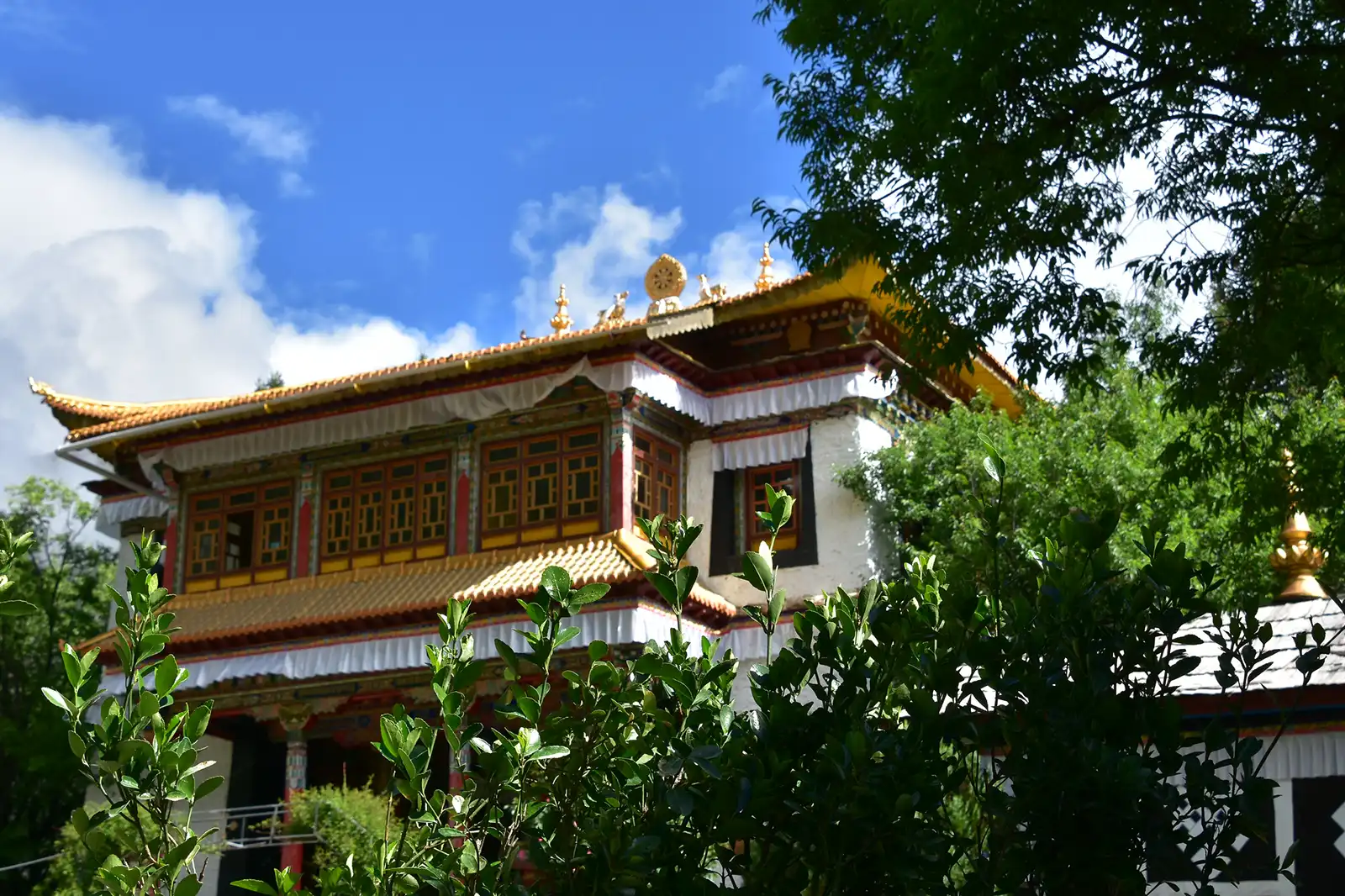
Within the principal temple of the monastery, one can find statues of Sangye Lingpa himself, Guru Rinpoche, Gautama Buddha, and Avalokiteshvara (Chenrezig), in addition to a horseback statue of Kongtsun Demo, a local guardian. During the Cultural Revolution, the Red Guards shot at the images of the monastery before ultimately setting them alight. Fortunately, the local lama Dudjom Rinpoche and his son Chuni Rinpoche were able to restore the sculptures.
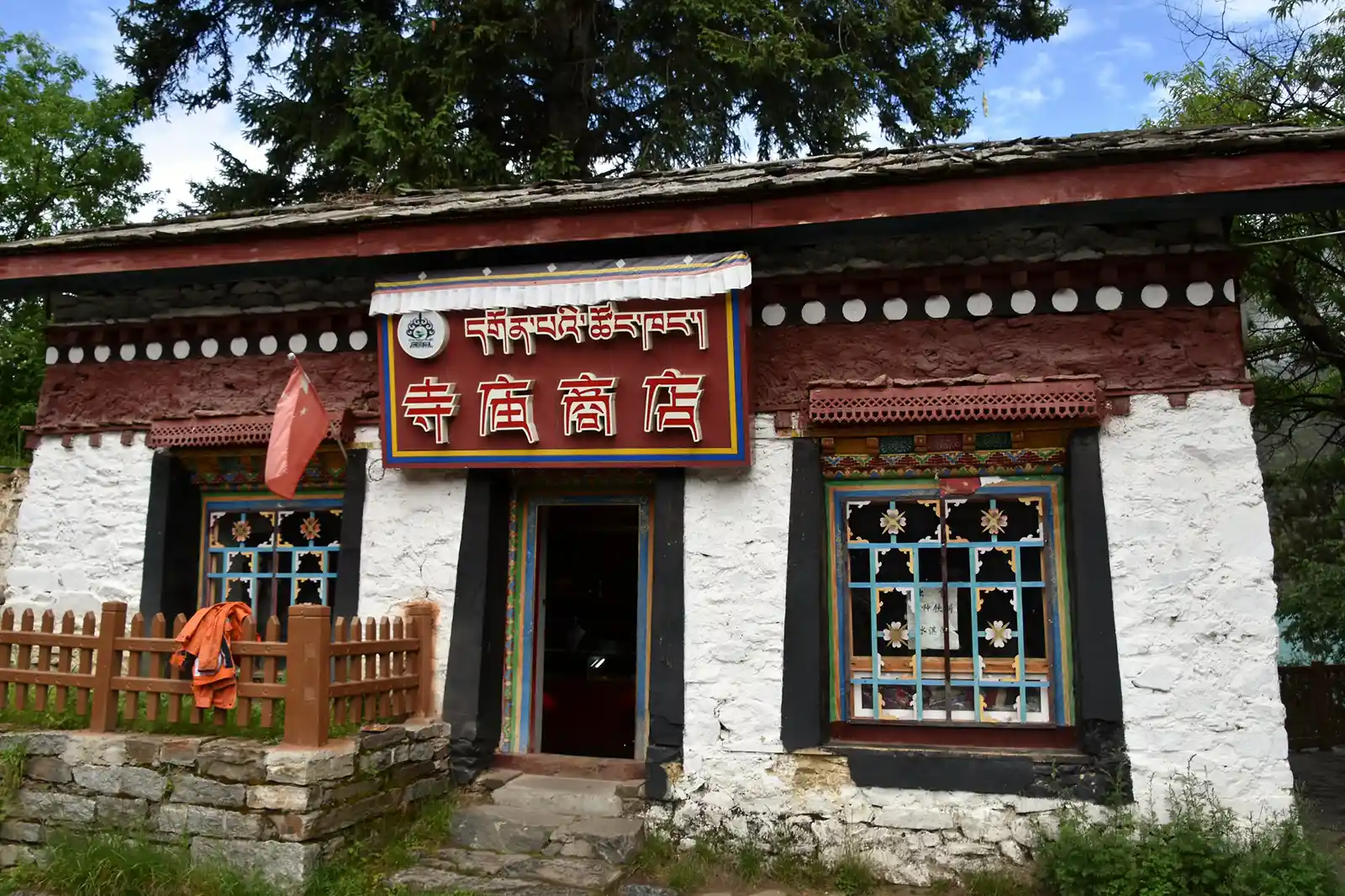
In the corner part of the temple, there is a hoof print of the horse of King Geser from Ling. This imprint is believed to have therapeutic capabilities. Thus Tibetans often touch it with their backs.
12 Sided Stone Tower
Nestled near the Lake, just a dozen kilometers from the highway exit, a series of mysterious twelve-sided stone towers stands. Their purpose is a mystery, a secret lost to time. Local Tibetans call them dudkhang – the ‘houses of demons’ – and tell tales of a forgotten king, Geser.
Ancient Shuba Fort
As you drive down the main highway close to Bahel (7 km), you’ll come across a rather impressive set of ruins – the Ancient Shuba Fort. Legend has it that the fort and its crumbling towers were constructed during Songtsen Gampo (7th century). It’s said that initially, there were seven castles, but sadly two of them have since crumbled away. Yet, the three remaining ones are still in remarkable condition, the most remarkable being Fort Shuba.
How to get to the Draksum-tso Lake from Lhasa?
It will take a 5-hour journey from the ancient city of Lhasa to reach the stunning Lake Draksum Tso. On the way, you will pass through the vibrant town of Bayi, with its bustling markets and brightly colored buildings and the towering Mila Mountain Pass. As you ascend to the pass, you will be rewarded with stunning views of the Tibetan plateau, the snow-capped mountains, and the sprawling valleys. With every twist and turn of the road, you will be overwhelmed by the sheer beauty of the landscape surrounding you. If walking is your preferred mode of transport, you can get off at Bayi Bridge and begin your 8-hour trek.
Best time to visit the Lake
Every year, on the 15th day of the 4th month of the Tibetan calendar, local folks gather around the Lake to celebrate their festival. If you join them at this particular time, you will experience the pilgrimage ritual up close. But if you want to witness the most enchanting sights of the Lake, come in autumn from September to November, when the entire area around the Draksum-so Lake is shrouded in radiant colors.
